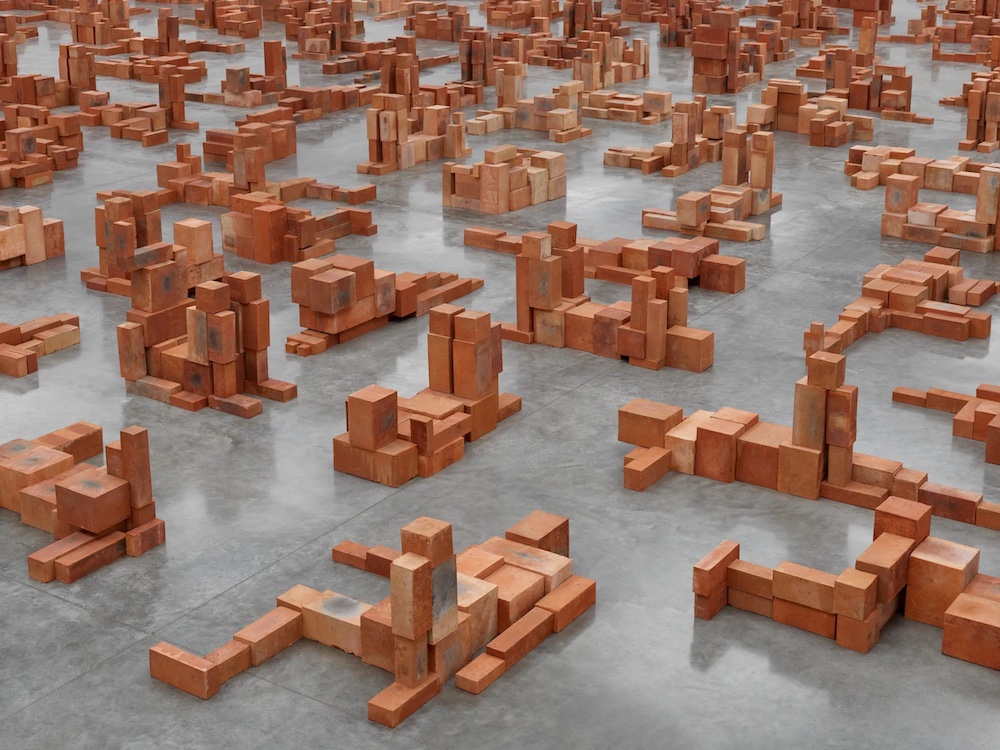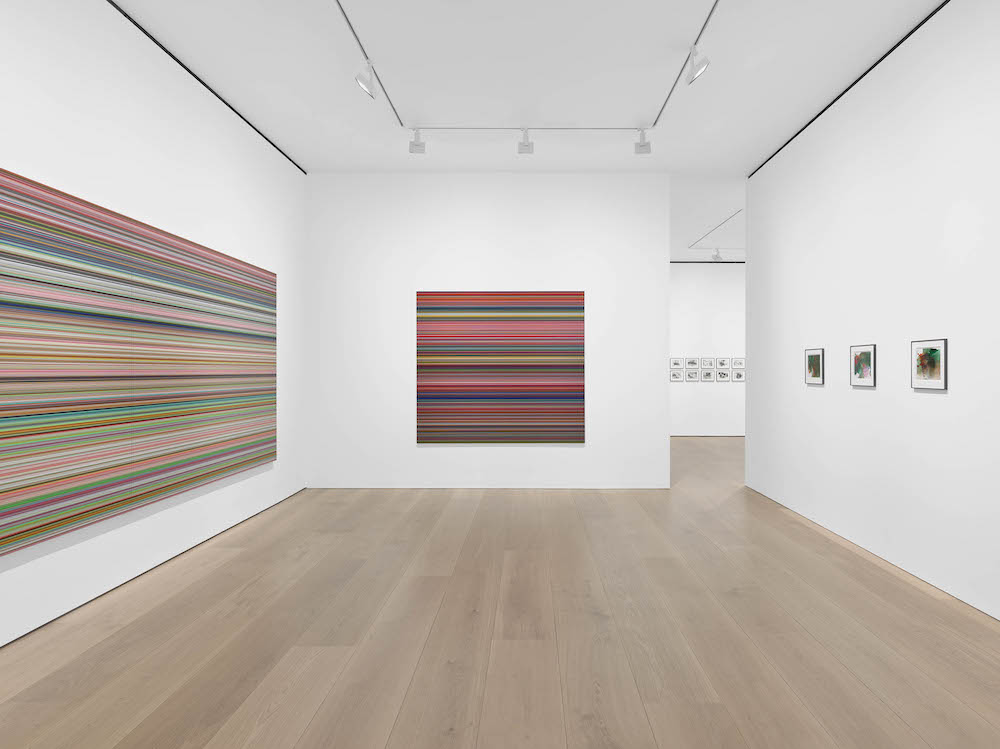Expanding the Black-Indigenous Latin American Experience
On June 23 in London, Serpentine Galleries unveiled a riveting exhibition entitled “Third World: The Bottom Dimension” by the rising artist Gabriel Massan. Presented in collaboration with the multidisciplinary artists Ventura Profana, Castiel Vitorino Brasileiro, Jota Mombaça, Novíssimo Edgar, and LYZZA, and on view through October 22, it transports viewers through a groundbreaking journey of video game and web3 token technology, as well as transformative site-specific art, spotlighting contemporary themes of decolonization, collective healing, and societal metamorphosis.
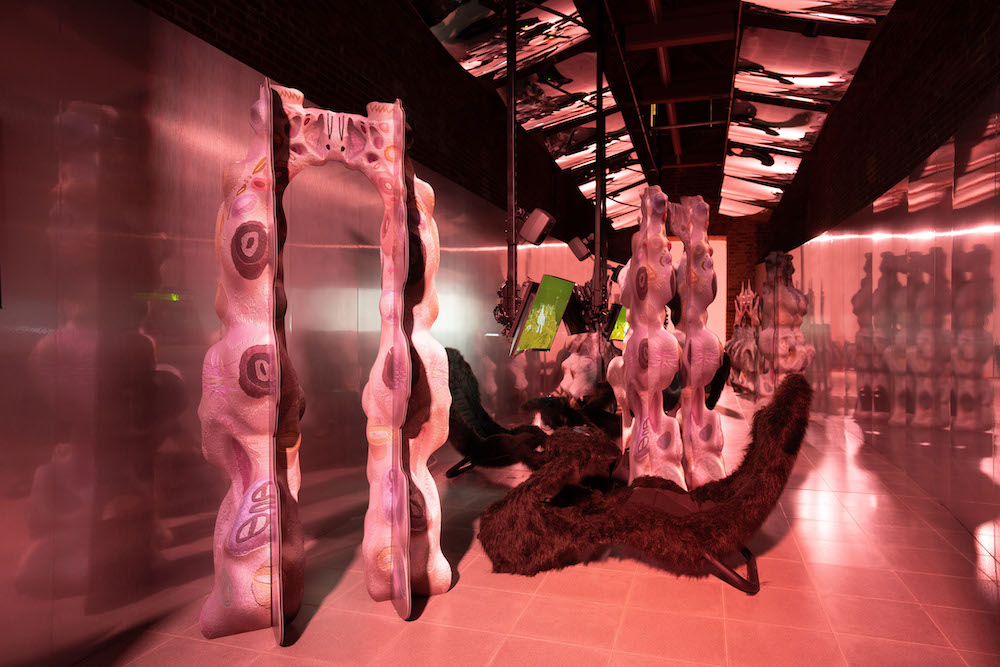
Installation view of “Third World: The Bottom Dimension,” photo by Hugo Glendinning, courtesy of Gabriel Massan and Serpentine.
Surrounded by visionary works of sound, sculpture, film, and set design, visitors can play the vibrant video game while minting “memories” from their experience as digital tokens—provided by Tezos—on the blockchain. Here, a highly textural public archive unfolds, connecting diverse perspectives and realities. Introducing captivating art by Alexandre Pina, Marchino Manga, Iraj Montasham, Ralph McCoy, Masako Hirano, Carlos Minozzi, and Sweet Baby Inc., the multi-dimensional game is a bold and challenging experience. With each stage designed by a different artist, players pilot characters such as FUNFUN, an agent sent to the Third World by a resource extraction organization, probing complex environments like that of post-colonial Brazil. Championing ecological appreciation and individual agency, the meta-simulation reveals twisted perceptions and de-centralizes the global narrative.
Whitewall spoke with Massan about existing in a third-world dimension, reshaping systems of inequality, and the joy of collaborative world-building.

Portrait of Gabriel Massan; photo by Hick Duarte, courtesy of the artist and Serpentine.
WHITEWALL: Your exhibition at Serpentine in London has garnered significant attention. Could you provide us with an overview of the show, and describe the central themes your artwork explores?
GABRIEL MASSAN: “Third World: The Bottom Dimension” is a set of visual, sound, virtual, and interactive experiences that coexist in the same space, collaborative worldbuilding and radical storytelling, constituted from the desire to expand the themes central to the game physically, developed over two years with collaborators and the Serpentine Arts Technologies.
The exhibition celebrates the onboarding, observation, and effects of a fictitious digital resource colonization and extraction mission. Delusions about a breach in a “Plenum.” An hegemony unable to recognize its flaws exists in an unmanageable loop, reflecting the constant infiltration of the inquiries presented by the narrative in the game. This system spreads from the center, reflected in the works of Castiel Vitorino Brasileiro, Novissimo Edgar, LYZZA, Jota Mombaça, and Ventura Profana, which occupy the entire perimeter.
WW: How does your work align with the gallery’s ethos? What unique perspectives might you bring to this particular exhibition?
GM: Serpentine, especially Serpentine Arts Technologies, is an ecosystem of co-creation and collaboration as a laboratory of constant artistic and technological experimentation. The idea of the game—which began during the Artist Worlds program in an invitation made by Tamar Clarke-Brown in late 2021—from the inception was to build a platform for other artists from different practices to experiment with storytelling in collaborative worldbuilding, and I believe the exhibition recollects this first intention.
My approach so far contemplates the importance of encounters and relations, the celebration of shared knowledge, and the constitution of communities that helped me understand myself and form myself as a thinker and an artist. It is the standpoint of a young artist who endured a genocide uncovering their creative power in claiming tools and digital resources, aiming to build and disseminate thoughts and other configurations of the systems of inequality and segregation that still constitute themselves around me.
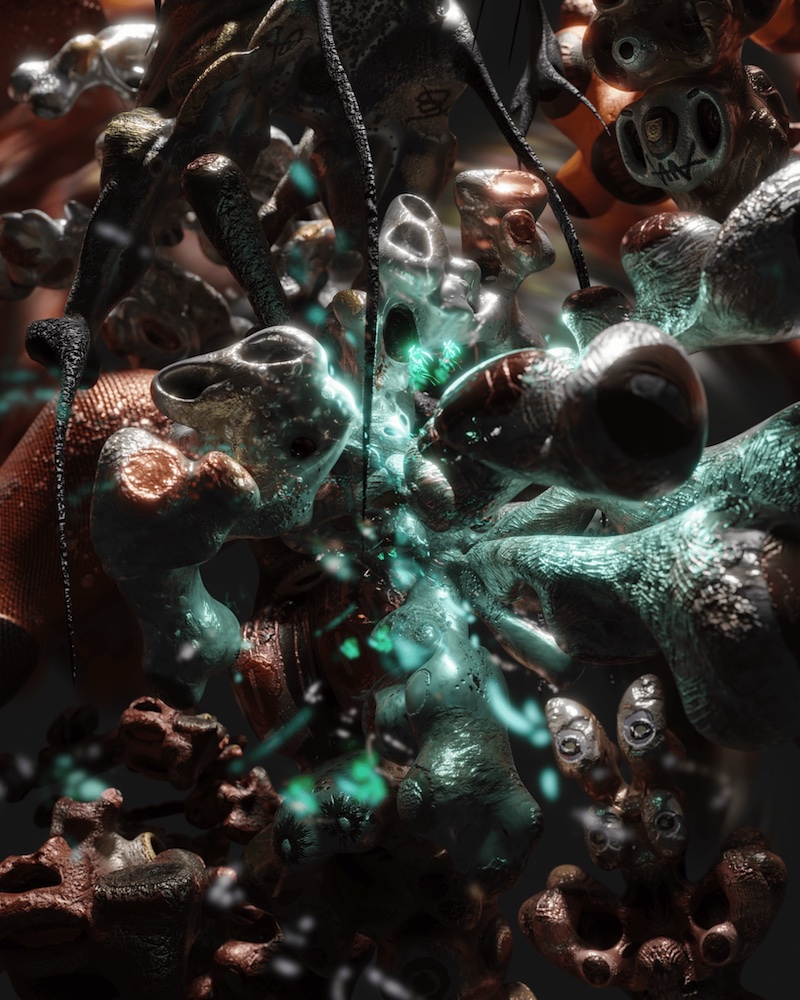
Installation view of “Third World: The Bottom Dimension,” photo by Hugo Glendinning, courtesy of Gabriel Massan and Serpentine.
WW: Your artistic practice often incorporates unconventional materials and techniques. Can you give us some insight into the materials and processes you employed for this exhibition?
GM: The exhibition brings together different techniques and materials present in my practice since the early years of my career. It circulates through digital sculpture, digital painting, interactive storytelling, worldbuilding, experimentation and simulation of handheld cameras on game engines, video games, 3D animation, video art, video installation, MDF sculptures, seating and station design, set design, light, voice, and sound exercises.
WW: Collaboration plays a vital role in your work, with various disciplines and individuals involved. Can you tell us about any collaborations or partnerships that influenced you for this show?
GM: One of my first pieces was a reaction to Ventura Profana‘s performance in 2017 while I was still living in Rio de Janeiro. Since our first meeting, Ventura’s practice has dramatically influenced mine. Many of my pieces are inspired by her texts and compositions. The presence of the artist’s work in the show is essential for realizing the collaborative range of the project because it attaches this first moment and reveals it as a raw material of the juncture in which I find myself now—studying all the pillars that operate as a ground for my technique and for the other encounters I had along the way, comprehending how consequential this first unfolding was.
There are also collaborations, references, and reflections based on concepts and essays by Jota Mombaça, Denise Ferreira da Silva, and Saidiya Hartman, who have broadened my practice to critical thinking and pondering about the studies of blackness and the movements generated from its performances.
“Ventura’s practice has dramatically influenced mine.” —Gabriel Massan
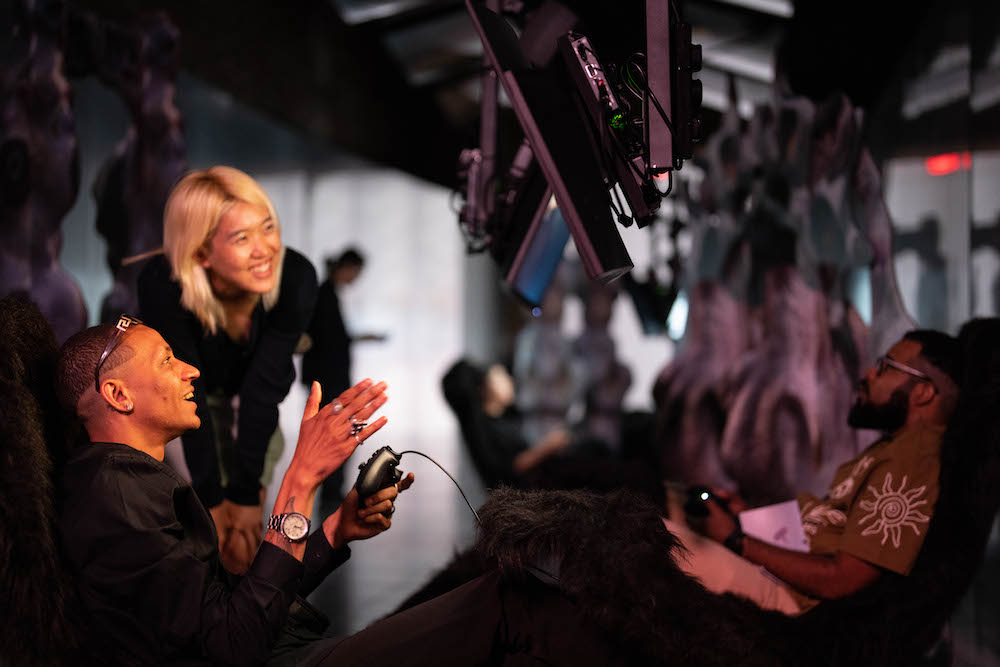
Photo by Hugo Glendinning, courtesy of of Gabriel Mason and Serpentine.
WW: As an artist, your work often elicits strong emotional responses. How do you hope visitors will engage with your artwork at the Serpentine Galleries?
GM: I do not expect a specific response or reaction. What I do believe is that the subjectivity, the confusion, and the extremity of components can render strangeness, and this feeling can attract and repel, depending on the image that is interpreted by both your unconscious and your conscience, and this is what fascinates me to build spaces and narratives like “Third World.”
WW: Your exhibition title suggests a specific narrative or concept. Could you elaborate on the significance of the title and how it relates to the works on display? What story or experience are you inviting visitors to explore?
GM: It is an expression that has been part of my existence since I could understand myself as an individual or a social being—living and standing in a third-world territory, existing on the edges and in the condition of subordination. I acknowledge that because it is a complex, challenging, and diverse expression in nuances and possibilities, it made me imagine what a “Third World” would be, what forms its reality, and how I could appropriate this to perform a kind of dynamism that would reflect on this already given condition. I was concerned with disbanding the signs and meanings surrounding this sense of the world by reimagining a dimension accessed and understood by a subaltern look, playing with those arrangements and worldviews based on navigation and starting point consolidated by colonization.
“I was concerned with disbanding the signs.” —Gabriel Massan
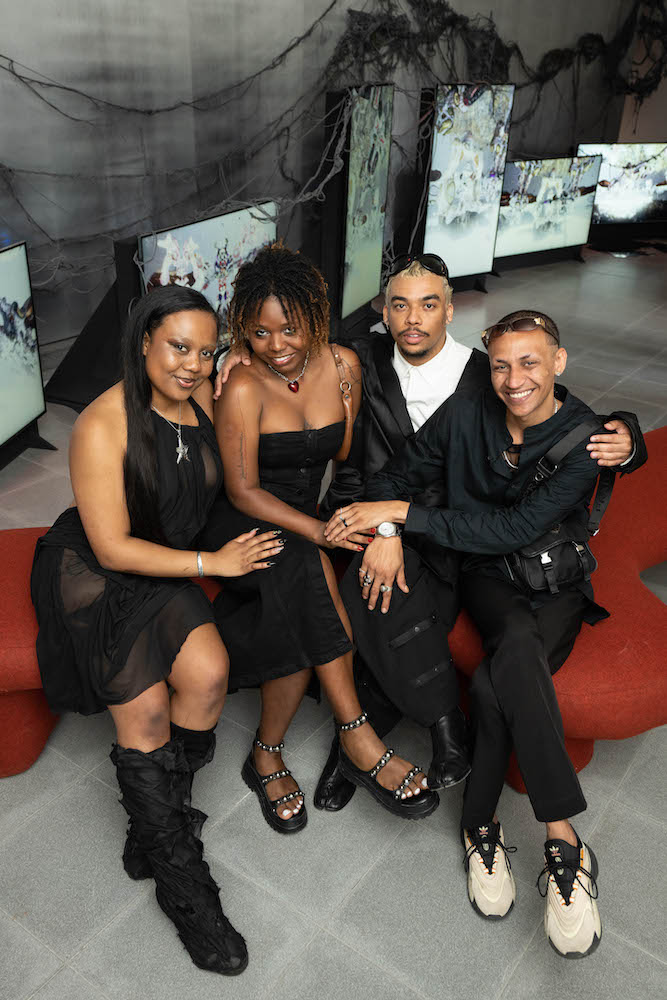
Gabriel Massan, Castiel Vitorino Brasileiro, Novíssimo Edgar & LYZZA; photo by Hugo Glendinning, courtesy of the artists and Serpentine.
WW: Exhibiting at the Serpentine Gallery is a milestone in an artist’s career. Has this opportunity influenced the direction of your artistic practice or opened up new possibilities for future projects? If so, in what ways?
GM: Yes, it is a tremendous opportunity to present my first solo exhibition at age 26 at the Serpentine. Given my age, the content of my practice, who I am, and the length of my career, I never envisioned this possibility. However, here we are. Developing such a particular and challenging task made me reflect during the research and production time about my practice and affinity with my art, institutional art, and art itself. It helped me look back, comprehend what constituted me, and thank each of these events that steered me to this moment.
There are many prospects to pursue and many other challenges, which I will face with more conviction because of this extraordinary venture that I had the privilege to access and accomplish with everyone who supported me and believed in my vision.
“It helped me look back.” —Gabriel Massan
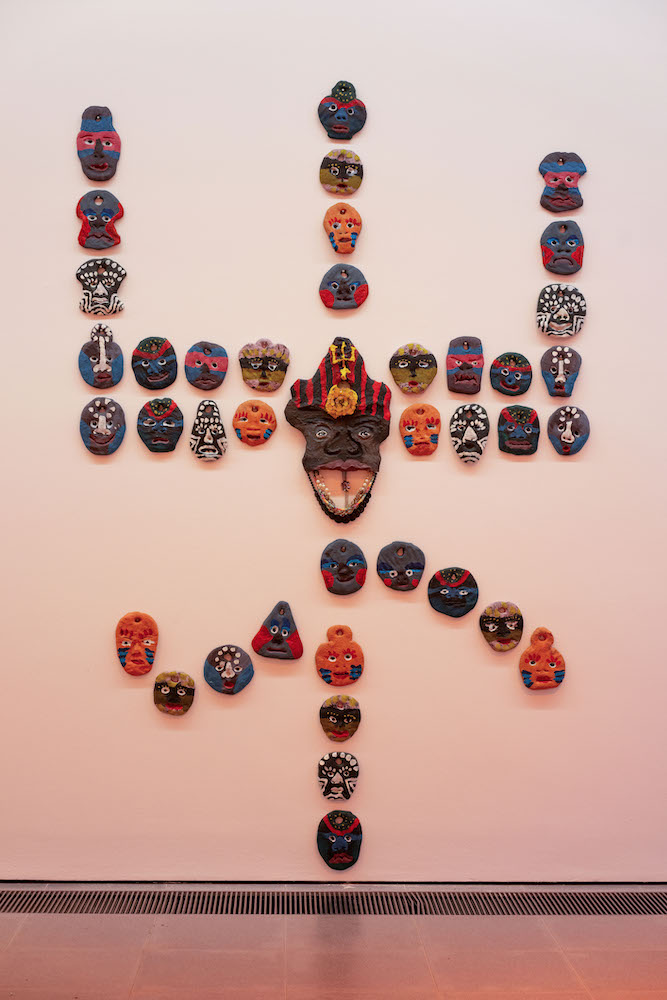
Installation view of “Third World: The Bottom Dimension,” photo by Hugo Glendinning, courtesy of Gabriel Massan and Serpentine.





